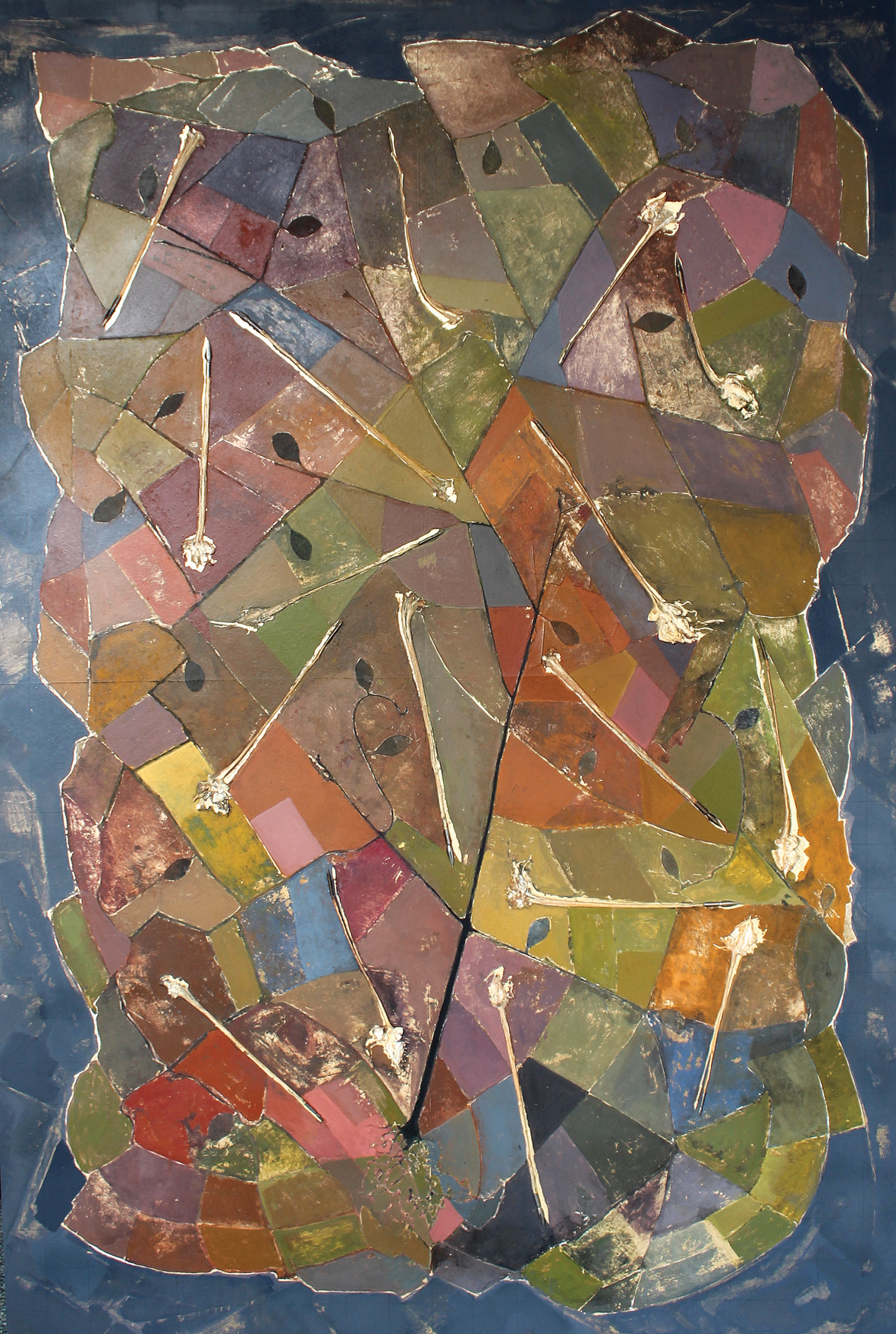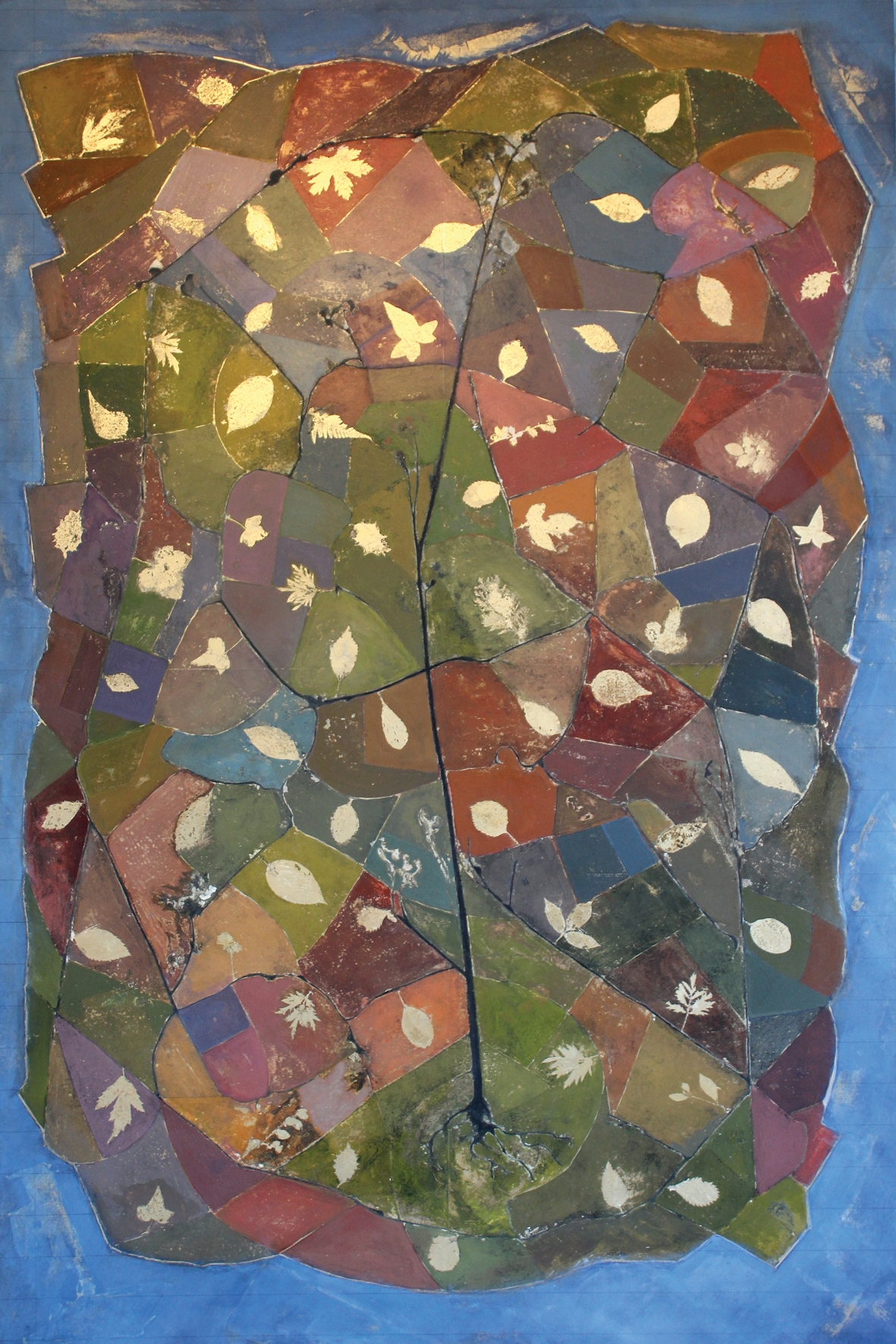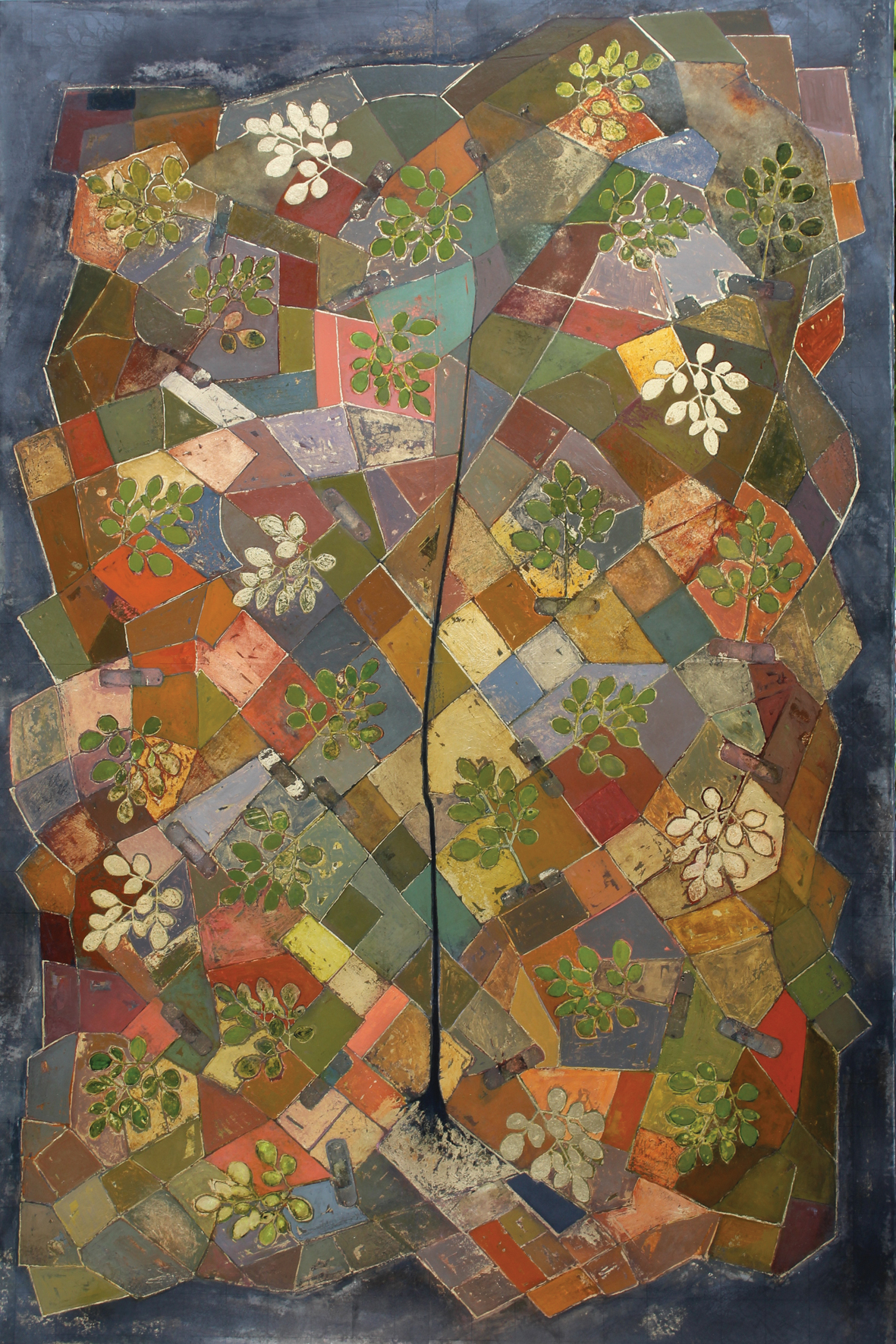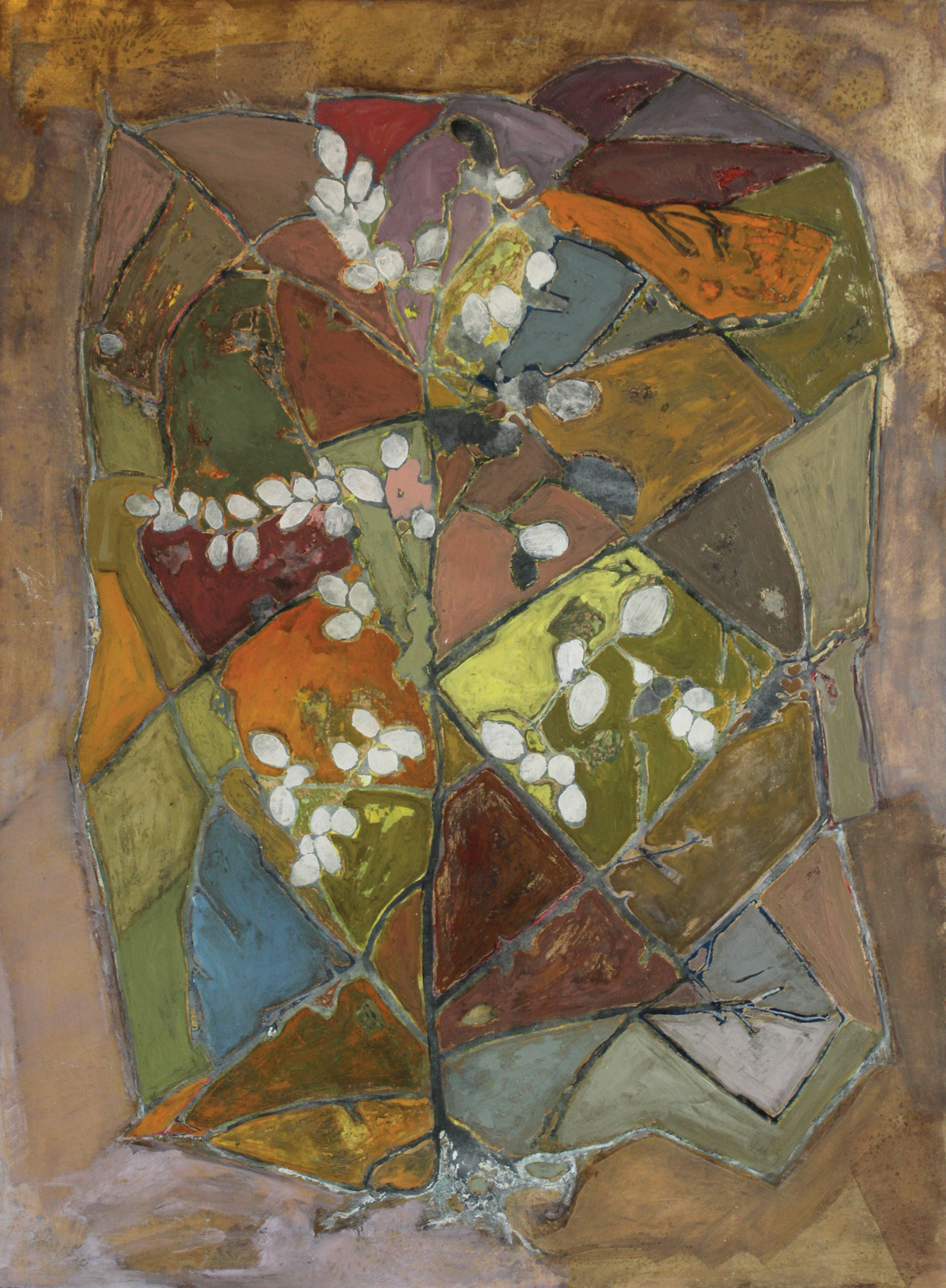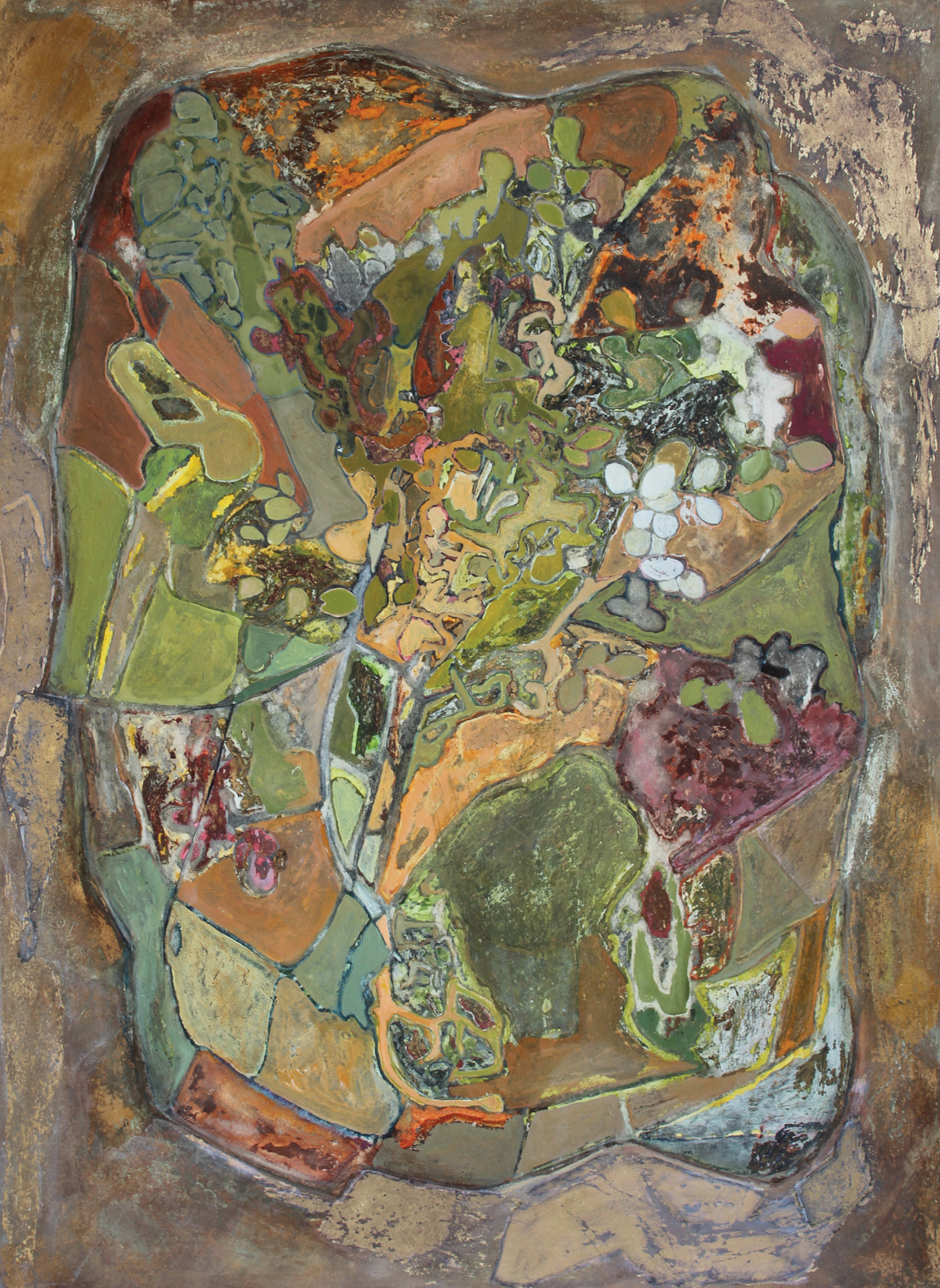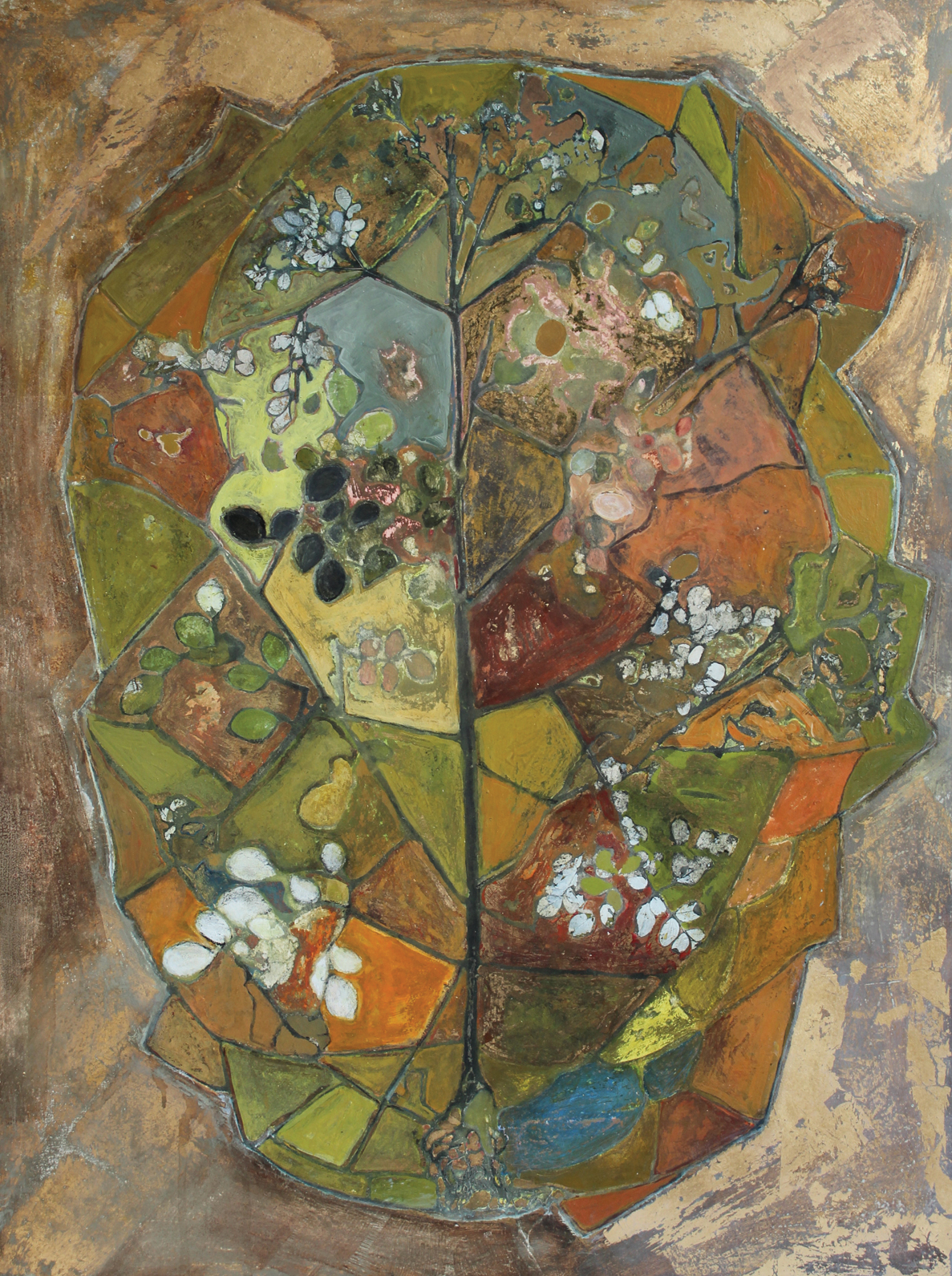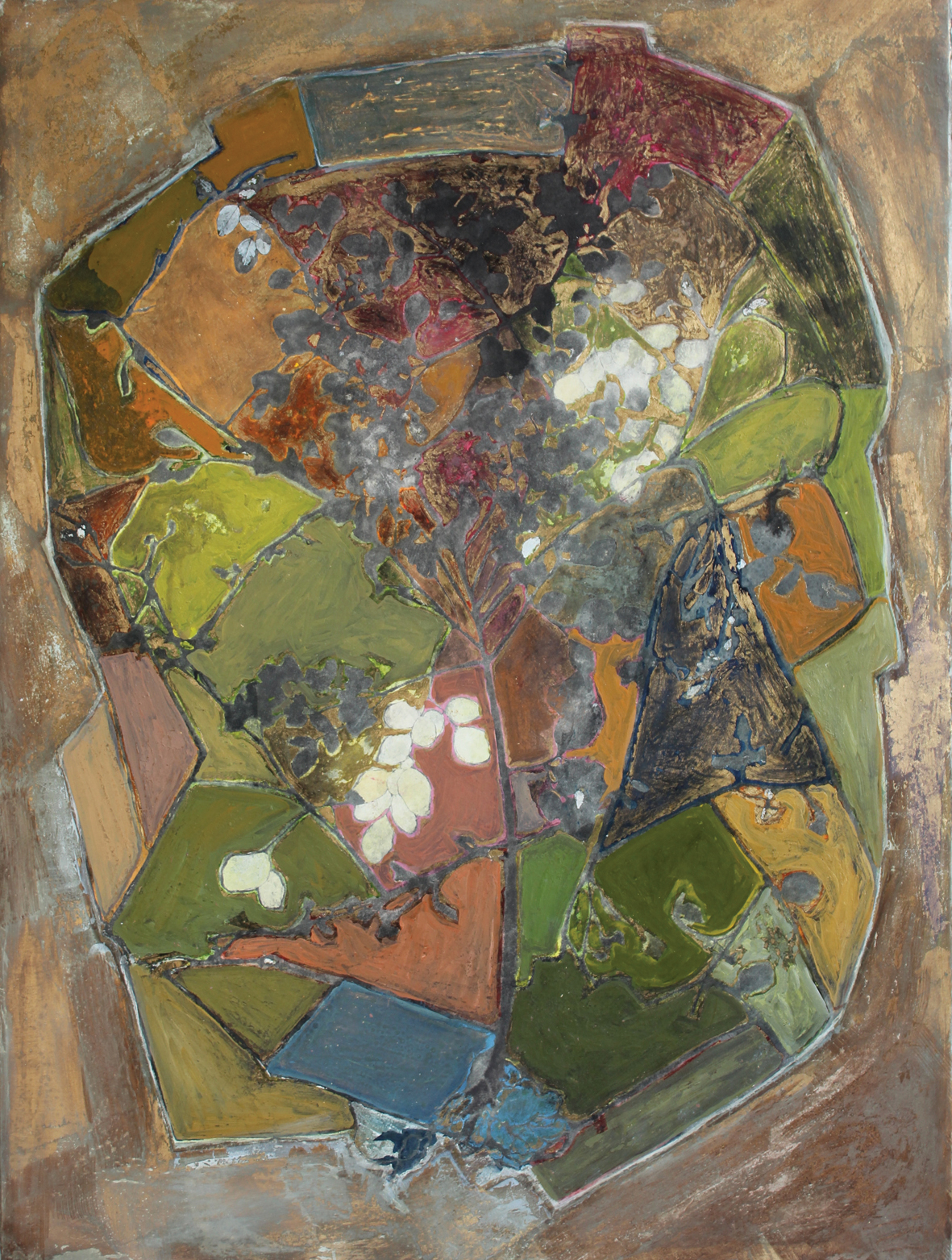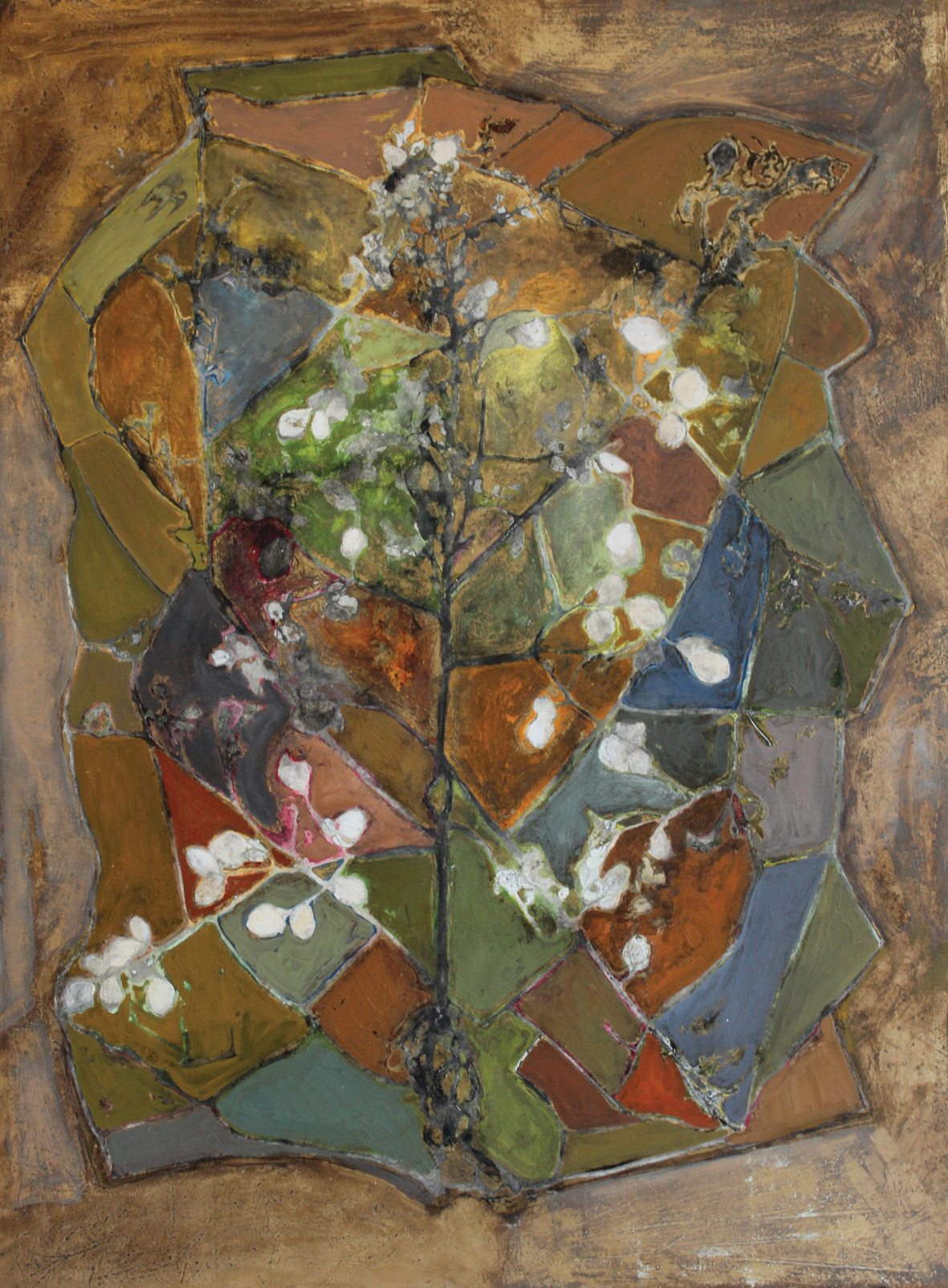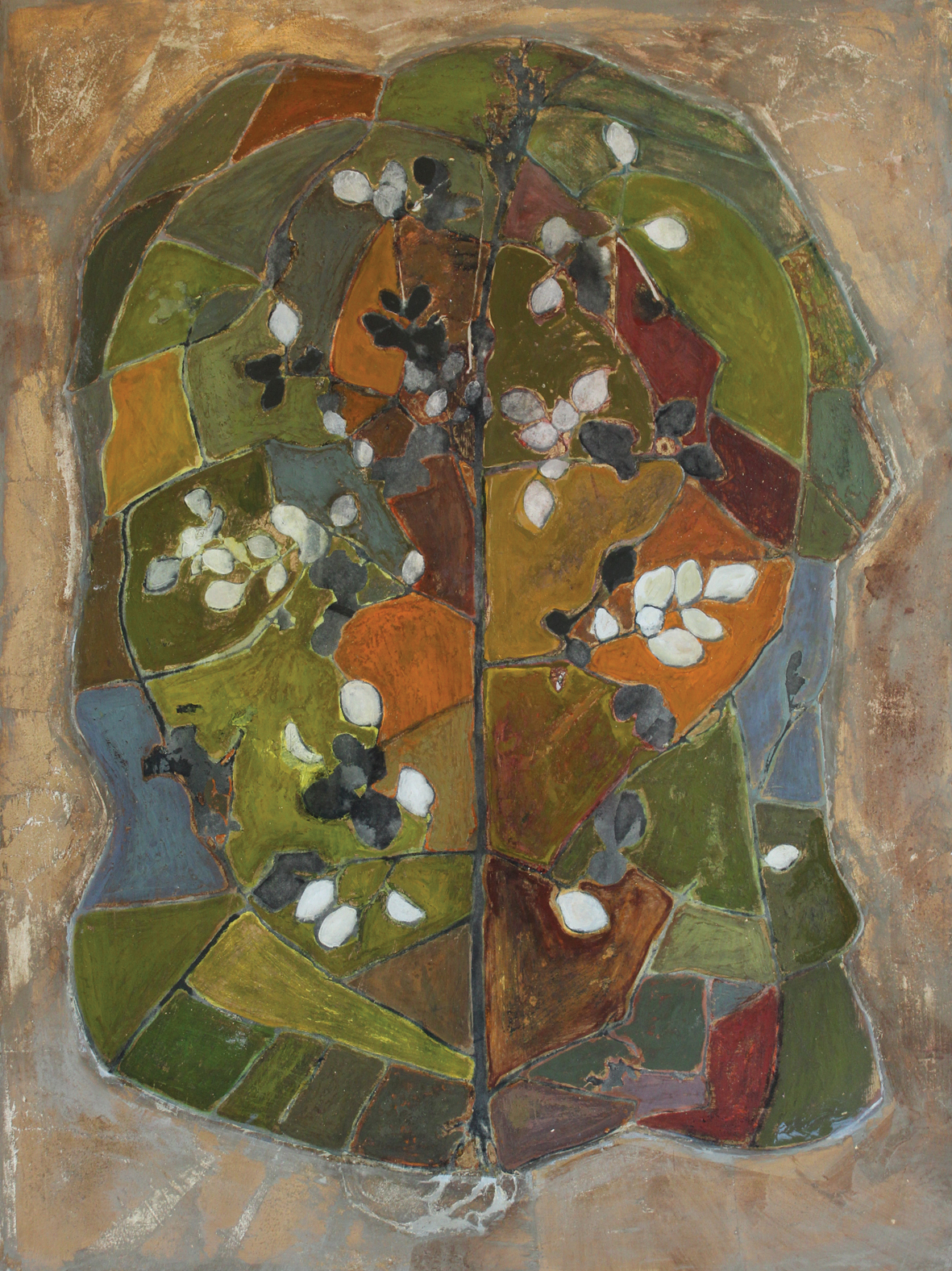Located on the outskirts of Banchory in Aberdeenshire, Woodend Barn is an exceptional venture that looks properly at what art can be within a community. I was delighted to be invited to be an artist in residence there in 2014.
The Barn buildings and allotments are surrounded by a sublime landscape. The people I met there are extraordinarily engaged in both art and place. During that time I admired the way that Woodend is, in many ways, an island where art seemed to fold itself seamlessly within the place and community. The local was crucial but was not worn with the heaviness some places gather.
It was also an international venue with ideas and aspirations; an oasis that made me feel that what is possible was actually happening. There was no tick box audit here but instead a rolling and ambitious set of plans, actions, thoughts and questions that wove themselves through the environment. In my mind it became an island of possibilities that we all know but rarely encounter.
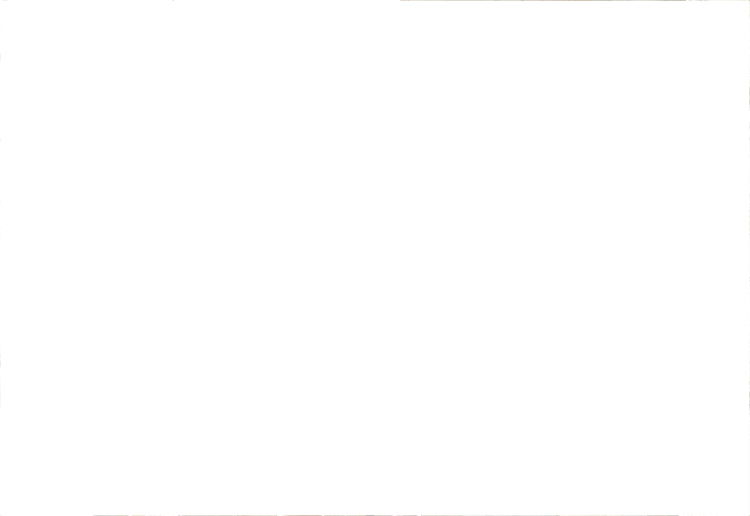
Gathering threads
Elsewhere that year I was making works that will form part of a larger installation. ‘The Map Room of the Last Islands’ is made up of sculptures and paintings that refer to a kind of cartography; an atlas of relationships, forms and colours that are the ecology of my practice. As is often the case the ‘Island’ works emerged from several directions and threads of thought’.
I had been working with fragments of Moringa Oleifera trees to construct a series of works I called ‘Miracle Maps’. Leaf by leaf, between 2009 and 2011, the works became a contemplative act of constructing an imagined cartography. This was the first time I felt I was articulating these elements as a language. I had intimate knowledge of the history of each twig and leaf because they had been grown in my studio as part of my research into this remarkable tree.
Between 2011 and 2014 I installed grow tents in several galleries. Nottingham Contemporary, The Newlyn Exchange Gallery and The Wellcome Collection all housed tents growing Moringa trees. Each installation generated a source of roots, branches, leaves and stems from the trees. These were the elements I used in the structuring of the Island works.
Another thread was the intense period of time between March 2009 and March 2010 when I recorded the relationship I had with a lemon tree in a pot. As part of a project for Lincoln I had published a newspaper that included photographs of my garden and of the farmlands seen from the train to Lincoln as well as my thoughts on the effects on soil of the Anthropocene era. The lemon tree was grown in a soil that I constructed using this newspaper.
For a year I had the tree under close observation, making daily notes on the work I did to promote its wellbeing. The Lemon Tree & Me was a relationship in which I constantly monitored the health of that one plant whilst making connections to the meaning of responsibility.
I began to understand the need for an intelligent ecology based on values that are immanent within the complexities nature. The Lemon Tree & Me found a place between ethics, ecology and aesthetics and gave a shape to a generative programme of intensive care to involve our responsibilities as gardeners within a much wider context.
It was whilst working on The Lemon Tree and Me that my interest in islands began. In this instance the island was the relationship between the tree and me; a relationship that often felt like an isolated conversation, so intense was the focus, as I struggled to better understand the tree.
Maps and Territories
I have made several works in public spaces that have involved asking people questions. I have asked ‘What do you do to make yourself feel better?’, ‘What are common values?’ and ‘What sort of governance would you like in a 21st century Eden?’. I have then studied the answers and through this analysis it has become clear that local things including environment, politics, ecology and even ethics are crucial to many individuals for their wellbeing. It seems as though we are happiest living in a kind of local island and trying to make that island a better place for all that inhabit it. This may have something to do with control in an unstable and uncertain world but it did lead me to thinking about islands with borders that are mapped through local and direct experience, knowledge and need. I have found more sense, and maybe truth, in these local islands than I have in the distant co-ordinates of the state.
I have long been interested in maps. I have am fascinated by the maps drawn to direct people to specific places from far away. For example if someone was visiting me in Nottingham from Sydney then the map of directions would start with general instructions. Fly from Sydney to Heathrow airport. Get on the tube to St Pancras. Catch a train to Nottingham. Then the code of directions seems to switch. Walk through market square past the lions outside the old Council House. Outside the burger shop catch a bus to the Co-op then turn left at the post box that was once painted pink…
We map our local places differently to the way we map the globe. I am interested in the switch point where directions become more of an intimate knowledge of territory than a set of co-ordinates.
‘The Map is not the Territory’ is a remark made by Alfred Korzybski in 1931 and was popular with the Situationists International group. I have found it relevant to my practice too.
I see these Island works evolving a cartography that includes meaning and materiality. They are maps that construct, cultivate and review the relationship between meaning and material. This is, in part, a territory.
When I make one of the works I start with an idea of the place or activity that I am going to map. Over time the map itself starts to demand considerations of materiality that edges it towards being the territory.
The last islands all have had this quality of seeming to need certain decisions as the maps evolve and emerge. My relationship with them becomes one of intense looking and care. Maps, through experience, can direct us towards territories. I see this as a parallel to the way the Last Island works evolve.
The transition from a map with its own conceptual co-ordinates to a map that carries the co-ordinates but has also something of its own territory in it is entirely immersive for me.
It has been with these works in particular that I have experienced being on both sides of a boundary; in and outside of the work. This liminal threshold has occupied my thoughts for many years and with these works I better understand being simultaneously at and between a periphery and a centre.
In the relationship with these works I am both participant and observer. Each one was in a flux of processes as elements were tentatively applied and then removed, leaving only traces behind. Each transition seemed to place the work, and me, in an intermediate space. This intermediate state or threshold was the place where much of the evolving cartography of the work was realised.
The moments when the conceptual co-ordinates become part of the material geology of the work are the moments when my relationship with the work is at its most intense. Indeed it can be through these moments that the conceptual co-ordinates themselves become clearer for me; the map becomes the territory. It is when the conceptual thoughts of the work become as malleable and mutable as the materials that new knowledge and fresh perspectives emerge from the relationship. This is why the Last Island works resist a single conceptual reading because they have layers of intentions and of processes; a geology of the relationship. They are islands connected to experience. Every walk I take gives clues that are brought back to the work.
Endangered
I found a list of species that are extinct or in danger of becoming so. I was shocked by how many there are. I included Homo Sapiens into the rubric that was being used to define endangerment.
Humans (Homo sapiens)
Population size:
7,000,000,000 (seven billion)
Range:
Land surface 150,000,000 sq km, 57,500,000 sq mi
Primary threat:
Humans (Homo sapiens)
Action required:
Understand that the earth’s resources are not infinite. Remember that competition for these resources will create an unsustainable ecology. Try to become less of a menace to ourselves and other species. Be kind.
Species enter and leave the list because things change. The uniformity of the reasons for extinction or endangerment was a real eye opener. Dominating the list was environmental disruption causing a crisis in habitat. Frequently the disruption was human in its origin. Reading through the list I found myself thinking about each endangered environment being a kind of island where the autonomy of place was fundamental to the wellbeing of its inhabitants.
This thought about freedom from external influences was part of my interest in the Island works. I wanted to try and make works that evolved within themselves; where the material and structural relationship became an echo of the Lemon Tree and Me.
It may have been my interest in endangered species that led to the title of ‘Last Islands’. It was a struggle to choose between ‘Last’ and ‘Lost’ Islands. I did not want to imply that the Islands were extinct, or lost, but rather endangered.
I think that what is under threat are the possibilities that open up through close observations, play, reflection, listening and intense relationships; with our work and with our world. I think that learning by careful looking, practising and reflecting is endangered. We live with torrential streams of data that purport to be knowledge. It can be amazing, but can also easily slide by us as we struggle to assimilate so much data into our everyday lives. The danger is that we fail to observe and evaluate what the data may be telling us.
If our own islands of reflection and personal learning become endangered whilst our society requires more and more conformity in learning then we could lose our sense of connectedness to the world in which we walk. We could be walking in a terrain where our digital lives have flattened our sensibilities; both sad and dangerous.
The word ‘island’ with its perception of isolation and detachment can have adverse connotations in our society. The island I advocate is not isolated but rather is intensely focused to effectively form the knowledge that is gained through experience. Communication between diverse islands becomes fluent if the knowledge shared comes from common experiences; Island to Island to island.
Back to Banchory
My trips to Banchory also fed the Last Island works. Whilst there with my wife, we met many people and took many walks through the town and into the surrounding woods and river banks. At each meeting and on every walk I was aware of learning more language to take back to the work.
As write this I am able to see a tree outside on our street. The root zone is crammed with poppies and daisies. It is a great sight and the shapes and colours are simply wondrous. I am conscious that sights like this add to my language map as I try to connect to my environment and its ecology. I know that somewhere down the line this observation will inform a work. Sightings like this happened all the time in Banchory.
I know I am privileged to be able to see such things and fold them into my practice. The Last Islands have helped me navigate and map, albeit in a certain uncertainty, a world that is thrilling in its momentary beauty.

